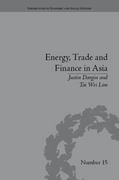Question
A monopolist faces an inverse demand function P = 10 - Q in each of two periods A and B. Her marginal costs are 5
A monopolist faces an inverse demand function P = 10 - Q in each of two periods A and B. Her marginal costs are 5 in period A and 5 - q A in period B (both in dollars). Thus, the monopolist "learns" about production in period A so that her marginal costs are reduced in period B. Assume that there is no discounting of second-period income.
(a) Derive the monopolist's profit maximizing quantities in both periods Suppose that in period B the monopolist (incumbent) faces an entrant with unit costs of $5. The entrant also has a fixed cost of F = 1/9 in order to enter the industry.
(b) Suppose the incumbent decides to deter entry in period B, what would be her output in period A? (c) Based on your calculations from part (i), should the incumbent deter entry? THis is COMPLETEE.
Step by Step Solution
There are 3 Steps involved in it
Step: 1

Get Instant Access to Expert-Tailored Solutions
See step-by-step solutions with expert insights and AI powered tools for academic success
Step: 2

Step: 3

Ace Your Homework with AI
Get the answers you need in no time with our AI-driven, step-by-step assistance
Get Started


